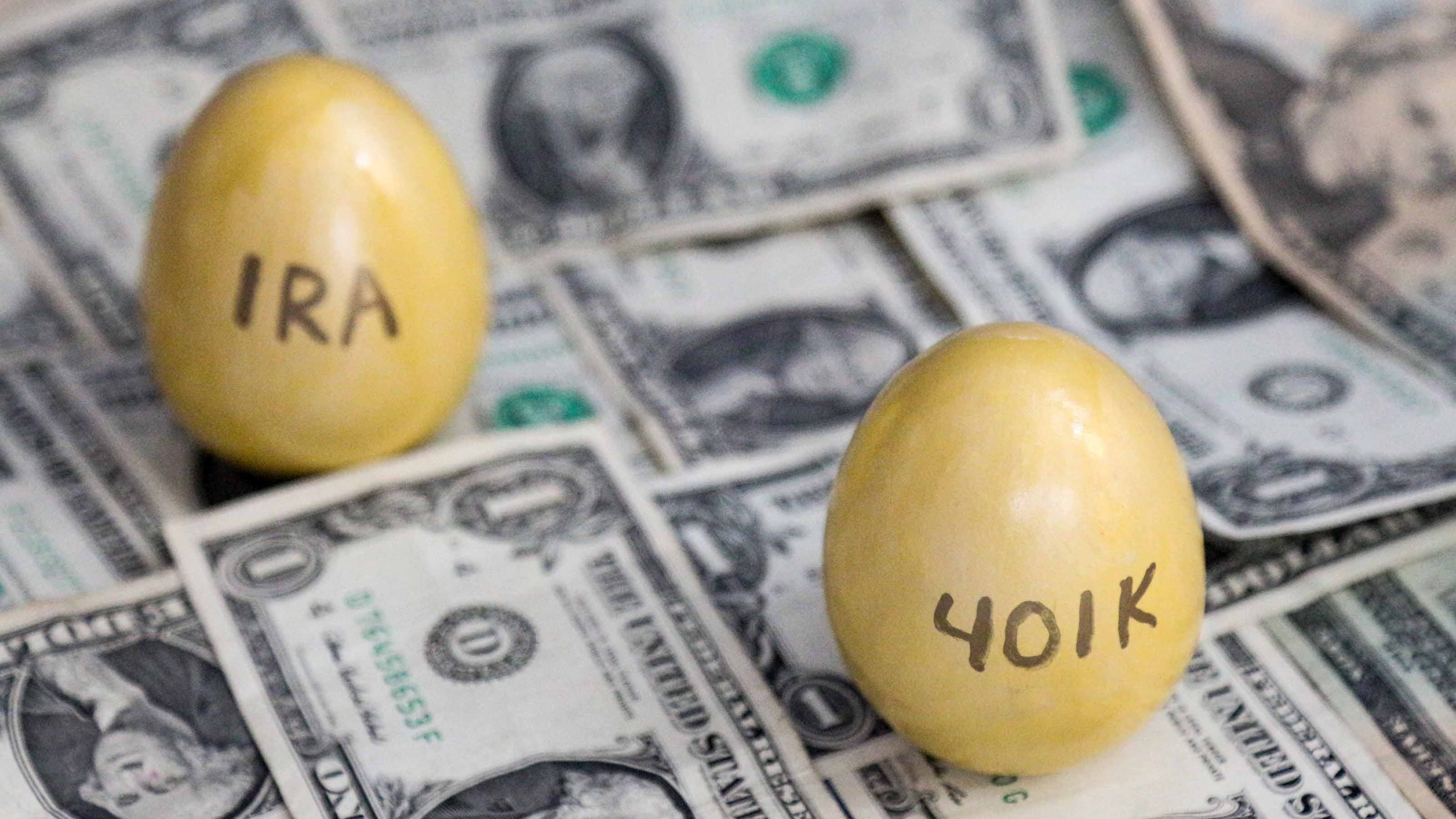Save More for Retirement in 2023 Thanks to Higher IRA and 401(k) Contribution Limits
If you're saving for retirement, you can contribute a lot more to an IRA, 401(k), or other retirement account in 2023.


IRA and 401(k) contribution limits are going up for 2023…and by a lot! That's good news for Americans who are trying to pack as much money as possible in these and other types of retirement accounts. The contribution limits are subject to adjusts for inflation every year, but they don't always rise (or go up by much) if inflation is in check. However, given the recent high inflation rates, the retirement account contribution limits jumped considerably for 2023.
And there's more good news! Increased income ranges for the traditional IRA deduction and the Saver's Credit means more Americans can save on taxes now while saving for retirement in the future.
Here are the details on how much more you can save for retirement next year and whether you'll qualify for a tax break when you file your 2023 tax return.
From just $107.88 $24.99 for Kiplinger Personal Finance
Become a smarter, better informed investor. Subscribe from just $107.88 $24.99, plus get up to 4 Special Issues

Sign up for Kiplinger’s Free Newsletters
Profit and prosper with the best of expert advice on investing, taxes, retirement, personal finance and more - straight to your e-mail.
Profit and prosper with the best of expert advice - straight to your e-mail.
IRA Contribution Limits for 2023
For anyone saving for retirement with a traditional or Roth IRA, the 2023 limit on annual contributions to their account goes up $500 – from $6,000 this year to $6,500 next year. That's an increase of 8.33%. The limit was stuck at $6,000 since 2019, but the steep inflation we've experienced lately finally gave it a boost. The additional IRA "catch-up" contribution for people 50 and over is not subject to an annual cost-of-living adjustment and stays at $1,000 for 2023 (for a total 2023 contribution limit of $7,500 if you're at least 50 years old).
There's another important component for people saving for retirement with a Roth IRA – the actual amount that you can contribute to the account is reduced if your income is too high. To qualify for the maximum contribution in 2023, your modified adjusted gross income must be less than $138,000 if single or $218,000 if married and filing jointly (up from $129,000 and $204,000, respectively, for 2022). Your maximum contribution limit gradually drops if your income exceeds those levels, and you won't be able to put any money into a Roth IRA in 2023 once your income reaches $153,000 if single or $228,000 if married and filing jointly ($144,000 and $214,000 for 2022). The phase-out range for a married person filing a separate return who contributes to a Roth IRA is not adjusted annually for inflation and remains $0 to $10,000 for 2023.
2023 Contribution Limits for 401(k) and Other Employer-Sponsored Plans
Workers who are saving for retirement with 401(k), 403(b), most 457 plans, and the federal government's Thrift Savings Plan can contribute up to $22,500 to those plans in 2023. That's a $2,000 increase over the contribution limits in place for 2022. The "catch-up" contribution limit for employees age 50 or older who participate in these plans also jumps from $6,500 to $7,500 for 2023 – for a total limit of $30,000. So, for employees who are at least 50 years old, you can contribute over 11% more to your employer-sponsored retirement plan in 2023 than you can in 2022. (By the way, you have until the end of the year to put money in your 401(k) or other employer plan for the 2022 tax year.)
The contribution limit for a SIMPLE IRA, which is a retirement plan designed for small businesses with 100 or fewer employees, is also increased for 2023. It jumps from $14,000 to $15,500 next year. The catch-up contribution limit for workers at least 50 years old who participate in a SIMPLE plan is also increased for 2023 – from $3,000 to $3,500.
IRA Deduction Phase-Out Thresholds for 2023
If you put money in a traditional IRA, you may be able to deduction some or all of your contributions (no deduction is available for contributions to a Roth IRA). However, the deduction is gradually phased-out if your income is above a certain amount. For 2023, the phase-out ranges are:
- $73,000 to $83,000 for a single person covered by a workplace retirement plan (up from $68,000 to $78,000 in 2022);
- $116,000 to $136,000 for a married couple filing jointly if the spouse making the IRA contribution is covered by a workplace retirement plan (up from $109,000 to $129,000 in 2022);
- $218,000 and $228,000 for a married couple if the spouse contributing to an IRA is not covered by a workplace retirement plan and the other spouse is covered (up from $204,000 and $214,000 in 2022); and
- $0 to $10,000 for a married person filing a separate return who is covered by a workplace retirement plan (the same as 2022 because this range is not subject to an annual cost-of-living adjustment).
As the phase-out thresholds rise, more people will qualify for the full deduction – especially if your income remains flat from 2022 to 2023 or increases at a rate that's less than the rate of inflation.
Saver's Credit Income Limits for 2023
Lower- and middle-income Americans who contribute to a retirement plan can claim the Saver's Credit on their federal tax return, which can reduce their tax bill by up to $1,000 ($2,000 for married couples). However, you don't qualify for the credit if your income exceeds a certain amount, depending on your filing status.
For 2023, the Saver's Credit income limits are as follows:
- $73,000 for joint filers ($68,000 in 2022);
- $54,750 for head-of-household filers ($51,000 in 2022); and
- $36,500 for singles filers and married people filing a separate tax return ($34,000 in 2022).
Once again, the higher income levels mean that more people will qualify for the credit in 2023.
Profit and prosper with the best of Kiplinger's advice on investing, taxes, retirement, personal finance and much more. Delivered daily. Enter your email in the box and click Sign Me Up.
Rocky Mengle was a Senior Tax Editor for Kiplinger from October 2018 to January 2023 with more than 20 years of experience covering federal and state tax developments. Before coming to Kiplinger, Rocky worked for Wolters Kluwer Tax & Accounting, and Kleinrock Publishing, where he provided breaking news and guidance for CPAs, tax attorneys, and other tax professionals. He has also been quoted as an expert by USA Today, Forbes, U.S. News & World Report, Reuters, Accounting Today, and other media outlets. Rocky holds a law degree from the University of Connecticut and a B.A. in History from Salisbury University.
-
 I'm want to give my 3 grandkids $5K each for Christmas.
I'm want to give my 3 grandkids $5K each for Christmas.You're comfortably retired and want to give your grandkids a big Christmas check, but their parents are worried they might spend it all. We ask the pros for help.
-
 If You're Not Doing Roth Conversions, You Need to Read This
If You're Not Doing Roth Conversions, You Need to Read ThisRoth conversions and other Roth strategies can be complex, but don't dismiss these tax planning tools outright. They could really work for you and your heirs.
-
 Could Traditional Retirement Expectations Be Killing Us?
Could Traditional Retirement Expectations Be Killing Us?A retirement psychologist makes the case: A fulfilling retirement begins with a blueprint for living, rather than simply the accumulation of a large nest egg.
-
 457 Plan Contribution Limits for 2026
457 Plan Contribution Limits for 2026Retirement plans There are higher 457 plan contribution limits in 2026. That's good news for state and local government employees.
-
 457 Contribution Limits for 2024
457 Contribution Limits for 2024retirement plans State and local government workers can contribute more to their 457 plans in 2024 than in 2023.
-
 Catch-Up Contributions to Retirement Accounts Boosted By SECURE Act 2.0
Catch-Up Contributions to Retirement Accounts Boosted By SECURE Act 2.0Americans approaching retirement age can now squirrel away more money in IRAs, 401(k)s, and other retirement accounts.
-
 Getting Ready for Retirement? We Explain Key Elements and Options
Getting Ready for Retirement? We Explain Key Elements and OptionsRetirement savings are just one component of your financial profile once you hit your golden years.
-
 When RMDs Loom Large, QCDs Offer a Gratifying Tax Break
When RMDs Loom Large, QCDs Offer a Gratifying Tax BreakSend money directly to charity from your traditional IRA, and you won’t owe taxes on the amount you donate. It’s a win-win!
-
 401(k) Contribution Deadline Coming Soon
401(k) Contribution Deadline Coming SoonYear-end is the common deadline for making max 401(k) contributions that can increase your savings for retirement and help lower your tax bill.
-
 IRAs vs. 401(k)s: Exceptions to 10% Penalty for Withdrawals Under Age 59½ Differ
IRAs vs. 401(k)s: Exceptions to 10% Penalty for Withdrawals Under Age 59½ DifferIRAs Before pulling money out of retirement accounts early, check the rules. The exceptions to penalties can differ depending on which type of account you’ve got.
-
 IRAs and 401(k)s Are Nice Now, But Will RMDs Hamper Your Retirement?
IRAs and 401(k)s Are Nice Now, But Will RMDs Hamper Your Retirement?Roth IRAs We’ve got four years left until tax rates are set to revert to higher levels, so workers may want to shift their thinking away from 401(k)s and traditional IRAs in favor of Roth accounts.
